Prine, Don't you work in a place that istalls turbos? Cat?
You are using an out of date browser. It may not display this or other websites correctly.
You should upgrade or use an alternative browser.
You should upgrade or use an alternative browser.
turbo
- Thread starter SRT_DSTRHOLC
- Start date
-
I did....I worked for Cummins Engine INC. for 6 years.
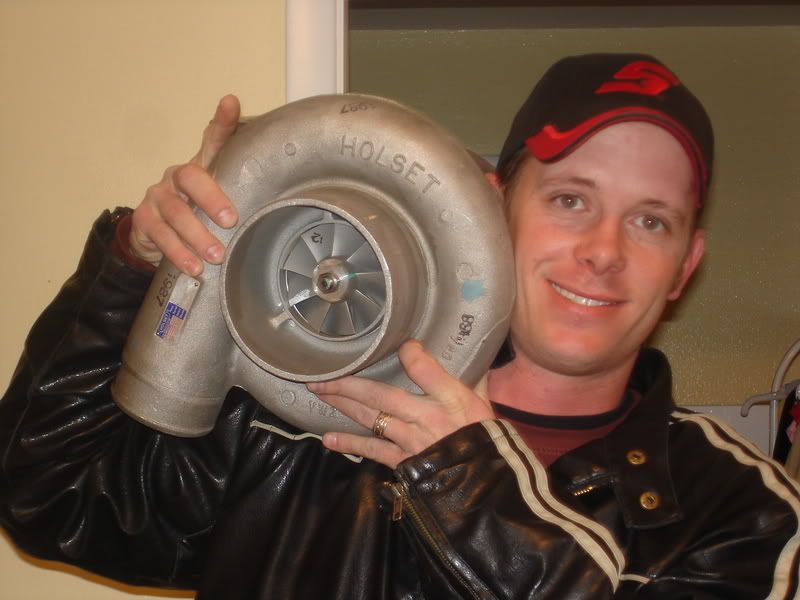
At 24 years old, I was assembling 5.9L, 8.3L, 855 c.i., 14L, 19L, 28L, 38L and a few "50 Liter V-16 Twin Turbo" Natural Gas Engines.
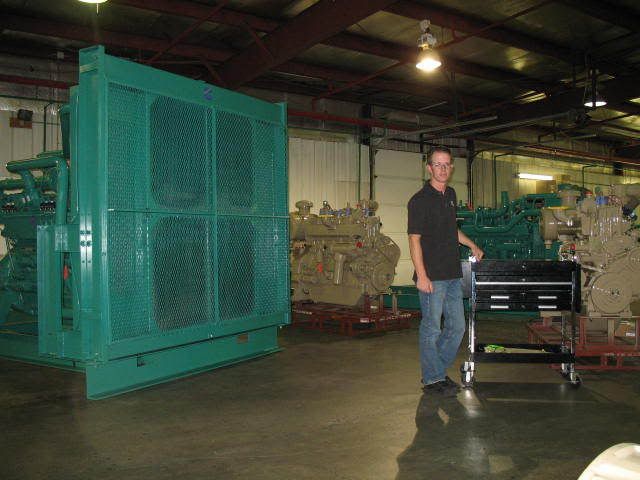
All the displacements had turbos optional, and we assembled, dyno tested, cleaned, painted and shipped from that location.
We also had a Engineering Test cell that did nothing but R&D.
All our engines used NG or Liquid Propane exclusively and were rated for continous/stand by duty.
The compression ratios on our engines ranged from N/A - 8:1 - 12:1
Turbocharged - 8:1 - 9:1
I witnessed a 8.3L inline six on 35psi make 375hp/650ft lbs at 1800rpm.......that was continous rated for 280hp.
The biggest engine combo (50L V-16 TT) put out 1551 hp continous at 1800rpm.

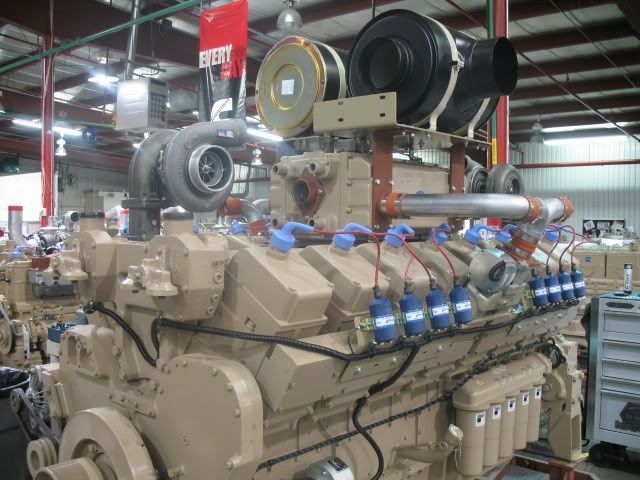
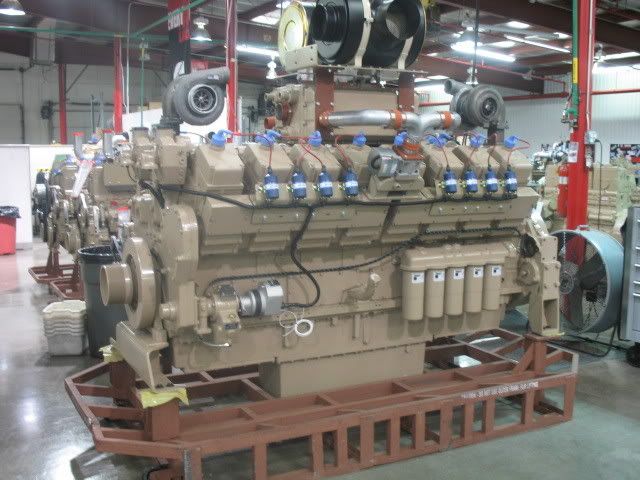
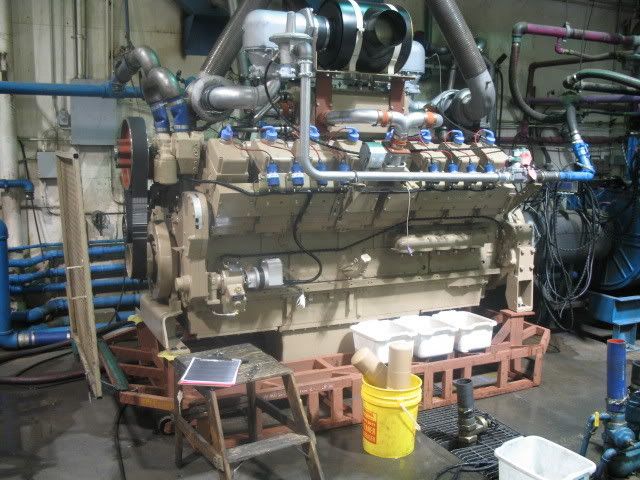
Turbo(s) rock when properly utilized....but hey...what do I know?

At 24 years old, I was assembling 5.9L, 8.3L, 855 c.i., 14L, 19L, 28L, 38L and a few "50 Liter V-16 Twin Turbo" Natural Gas Engines.

All the displacements had turbos optional, and we assembled, dyno tested, cleaned, painted and shipped from that location.
We also had a Engineering Test cell that did nothing but R&D.
All our engines used NG or Liquid Propane exclusively and were rated for continous/stand by duty.
The compression ratios on our engines ranged from N/A - 8:1 - 12:1
Turbocharged - 8:1 - 9:1
I witnessed a 8.3L inline six on 35psi make 375hp/650ft lbs at 1800rpm.......that was continous rated for 280hp.
The biggest engine combo (50L V-16 TT) put out 1551 hp continous at 1800rpm.




Turbo(s) rock when properly utilized....but hey...what do I know?
Valvebounce
Well-Known Member
Another factor to consider for a turbo engine is the camshaft choice. For a turbo motor, you ideally have a cam with a wider lobe seperation angle. If you imagine the cam profile drawn on a set of axis, the two shapes need to be further apart. This reduces the area of overlap, which is done for a few reasons. One being that as the incoming charge is forced in under pressure, the engine is less reliant on the scavenge velocity to fill the cylinder. (I say less, but it will still utilise some of that effect)
And secondly during the off-boost spool time, if the lobe centers are too close together, and the overlap period is greater, (Think of the axis with the overlap section shaded) then on one side of the turbo you have the exhaust gas trying to the spool the turbine, but on the inlet side you have the overlap induced exhaust gas reversion pressurizing the intake tract, which is effectively impeading the compressor wheel from spooling.
As the volume of gas flow through the exhaust housing will always be greater, the turbo will still spool. But having the wrong cam will lead to the the turbo taking longer to spool/the engine being a bigger turd off-boost.
A third reason why the wide lobe sep angle is benifitial, is that they typically have the the exhuast event beginning sooner before bottom dead center. This helps the exhaust system to evacuate the extra spent gasses. (remember, the turbo is forcing in much greater volumes of charge) And also helps to get the turbo spooling.
The trade-off with this is that some of the power is bled off, and not fully utilised to drive the piston down. But as those gasses are still expanding, it helds to get/keep that turbo boosting. Plus since the much more air/fuel is getting shoehorned into the cylinder, it's an accceptable tradeoff.
Please do bear in mind though, that these profile of camshaft will typically raise your dynamic compression ratio. (Less overlap to bleed off intake pressures)
To be honest, it doesn't sound like you've built a turbo engine, but you're now tempted by the allure of forced induction. You could well try it, but I'd say that instead of enjoying the fruits that forced induction can yeild, you'll have never ending headaches of blown gaskets, detonation, broken ring lands, and poor drivabilty. (I've been there, and you get sick end tired of fixing broken motors pretty quickly.)
And secondly during the off-boost spool time, if the lobe centers are too close together, and the overlap period is greater, (Think of the axis with the overlap section shaded) then on one side of the turbo you have the exhaust gas trying to the spool the turbine, but on the inlet side you have the overlap induced exhaust gas reversion pressurizing the intake tract, which is effectively impeading the compressor wheel from spooling.
As the volume of gas flow through the exhaust housing will always be greater, the turbo will still spool. But having the wrong cam will lead to the the turbo taking longer to spool/the engine being a bigger turd off-boost.
A third reason why the wide lobe sep angle is benifitial, is that they typically have the the exhuast event beginning sooner before bottom dead center. This helps the exhaust system to evacuate the extra spent gasses. (remember, the turbo is forcing in much greater volumes of charge) And also helps to get the turbo spooling.
The trade-off with this is that some of the power is bled off, and not fully utilised to drive the piston down. But as those gasses are still expanding, it helds to get/keep that turbo boosting. Plus since the much more air/fuel is getting shoehorned into the cylinder, it's an accceptable tradeoff.
Please do bear in mind though, that these profile of camshaft will typically raise your dynamic compression ratio. (Less overlap to bleed off intake pressures)
To be honest, it doesn't sound like you've built a turbo engine, but you're now tempted by the allure of forced induction. You could well try it, but I'd say that instead of enjoying the fruits that forced induction can yeild, you'll have never ending headaches of blown gaskets, detonation, broken ring lands, and poor drivabilty. (I've been there, and you get sick end tired of fixing broken motors pretty quickly.)
megajoltman
Time to NUT UP or SHUT UP
I did....I worked for Cummins Engine INC. for 6 years.

At 24 years old, I was assembling 5.9L, 8.3L, 855 c.i., 14L, 19L, 28L, 38L and a few "50 Liter V-16 Twin Turbo" Natural Gas Engines.

All the displacements had turbos optional, and we assembled, dyno tested, cleaned, painted and shipped from that location.
We also had a Engineering Test cell that did nothing but R&D.
All our engines used NG or Liquid Propane exclusively and were rated for continous/stand by duty.
The compression ratios on our engines ranged from N/A - 8:1 - 12:1
Turbocharged - 8:1 - 9:1
I witnessed a 8.3L inline six on 35psi make 375hp/650ft lbs at 1800rpm.......that was continous rated for 280hp.
The biggest engine combo (50L V-16 TT) put out 1551 hp continous at 1800rpm.




Turbo(s) rock when properly utilized....but hey...what do I know?
Cough Cough you didn't happen to stick a couple in your tool box on the way out the door did ya?8)
megajoltman
Time to NUT UP or SHUT UP
Prine,please tell me what the hell that v16 death bomb thing
powers?
Is it big arse boats?
We have a couple huge monsters in are City Hall and Main Police Station for emergency generators.Nothing like standing anywhere there those things when the start up.
to much compression, even if you ran MAX overlap to bleeld some comp off, ya might as well weld the heads to the block, cause i can't see the head gaskets lasting under boost, and that's with a coolant injection and MAX retard, just can't see it worling.
SRT_DSTRHOLC
"There is never enough horsepower...."
yup this idea is on hold!
- Joined
- Mar 6, 2008
- Messages
- 1,142
- Reaction score
- 827
I'm surprised nobody mentioned "Run it on alcohol" yet. That'd work pretty well with 11:1 compression.
boosted
Life Needs Air
I think you have it backwards, your static compression is your piston configured compression and your dynamic or theoretical compression is with your boost figured in. With an 8.5-1 piston you can easily run 5lbs boost. I have a smallblock all forged internals static comp 9-1 and run 14lbs boost full 35degrees timing. Before I ran an intercooler I also ran water/alky injection no ping on 93 octane, now with the intercooler I don't use the water/alky except in the summer
any pictures of this setup?
Believe it or not, ultimately, having one of those turbochargers in my possession and then being snitched out for selling one for $450 is what cost me my job there....:angry7:
I HAD collected at one time about 8-10 fully functional Holset Turbochargers.
The skinny is:
Cummins had the R&D department inhouse, and used and tested configurations...each time starting with a clean baseline...new longblock, fuel system,...turbocharger and filtration system, ect....well when they got done testing a engine and doing the analysis on it they would scrap out the parts....the parts would go into large wooden crates along with nuts, bolts, scrap metal, hose clamps, wiring harnesses, and just junk.
I was managing the Quality Assurance of all incoming and outgoing engines and discovered these turbochargers going into the scrap bins straight off R&D engines and prepared a Re-Investment Package to recapture some money and have these used turbos sent to a Remanufacturing Facility, and my upper management closed the door on the idea. So afterwhile I got tired of watching functional turbochargers go to the local scrap yard for $.05/lb and started segregating the good and leaving the bad ones in the bins...taking the good ones home and stashing them.
I Lost my job.....a good cush job....$18.75/hr plus benefits for salvaging those turbos....Looking back, I have learned and would not do that again.
The past is the past.
EDIT: The Cummins NG engine I showed above powered compressors, pumps, generators and all kinds of Industrial/Oil & Gas Equipment. Cummins NG Engines were only 11% of Total Cummins Engine Production for 2007.
I HAD collected at one time about 8-10 fully functional Holset Turbochargers.
The skinny is:
Cummins had the R&D department inhouse, and used and tested configurations...each time starting with a clean baseline...new longblock, fuel system,...turbocharger and filtration system, ect....well when they got done testing a engine and doing the analysis on it they would scrap out the parts....the parts would go into large wooden crates along with nuts, bolts, scrap metal, hose clamps, wiring harnesses, and just junk.
I was managing the Quality Assurance of all incoming and outgoing engines and discovered these turbochargers going into the scrap bins straight off R&D engines and prepared a Re-Investment Package to recapture some money and have these used turbos sent to a Remanufacturing Facility, and my upper management closed the door on the idea. So afterwhile I got tired of watching functional turbochargers go to the local scrap yard for $.05/lb and started segregating the good and leaving the bad ones in the bins...taking the good ones home and stashing them.
I Lost my job.....a good cush job....$18.75/hr plus benefits for salvaging those turbos....Looking back, I have learned and would not do that again.
The past is the past.
EDIT: The Cummins NG engine I showed above powered compressors, pumps, generators and all kinds of Industrial/Oil & Gas Equipment. Cummins NG Engines were only 11% of Total Cummins Engine Production for 2007.
-
Similar threads
- Replies
- 69
- Views
- 4K
















